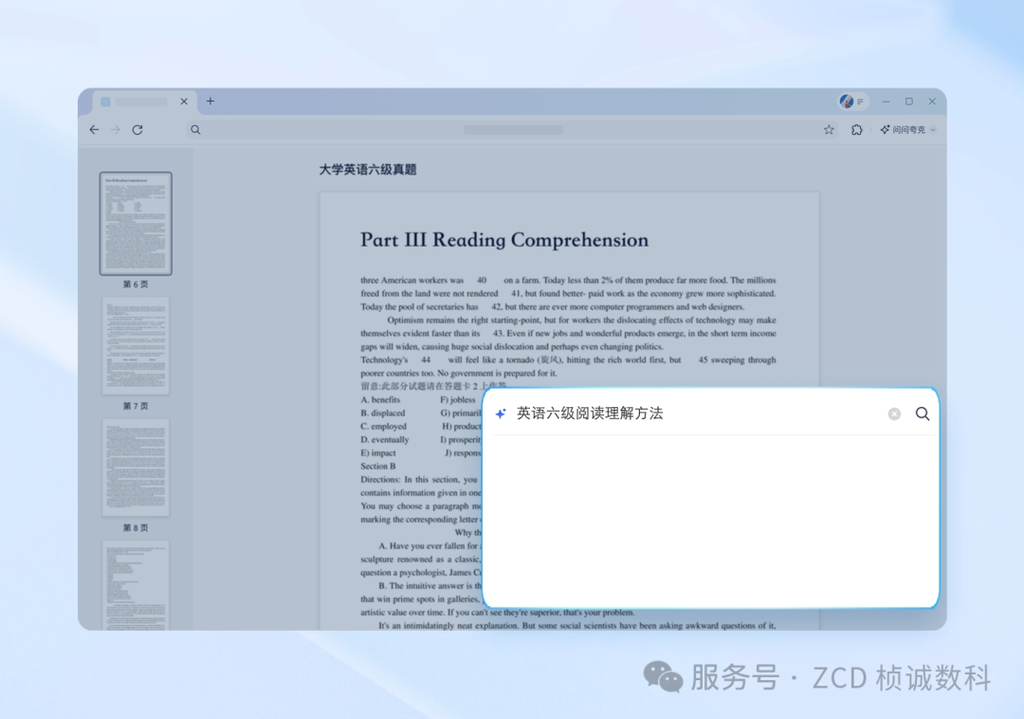Today’s News at a Glance
🎬 Kuaishou Kling AI Enters the 2.0 Era: Multimodal Editing Leads a New Wave of Video Creation
🚀 Alibaba’s Quark Tops China’s AI Application Chart: AI Super Assistant Reshapes Information Service Landscape
🐬 Google AI Attempts to “Talk” to Dolphins: DolphinGemma Model Decodes Ocean’s Secret Language
📈 Zhipu AI Initiates IPO Guidance: China’s Large Model Unicorn Races to Go Public
01🎬 Kuaishou Kling AI Enters the 2.0 Era: Multimodal Editing Leads a New Wave of Video Creation
Kuaishou’s AI video and image creation platform, Kling AI, recently released its stunning 2.0 version, including brand new video generation and image generation models, marking an upgrade across its entire model series. The most striking aspect of this upgrade is the introduction of the groundbreaking “multimodal video editing” feature. Users can now perform detailed additions, deletions, and modifications to AI-generated videos using text, images, or even video clips as references, much like editing text. Simultaneously, the new version significantly improves its understanding of user intent, the dynamic effects of generated videos, and aesthetic appeal, making the AI “understand you” better, easily realizing complex creative ideas, and greatly lowering the barrier to high-quality video creation.

Core Highlights
- Multimodal Editing: Newly launched multimodal video editing feature supports flexible modification and re-creation based on videos, images, and text, giving users stronger control over the generated content.
- Semantic Enhancement: The model can more accurately understand complex, natural text instructions, including detailed scene atmospheres, character actions, and emotional changes, generating highly matching content.
- Dynamic Optimization: The motion smoothness, temporal coherence, and camera movement effects of generated videos are significantly improved, better presenting complex actions and subtle emotions, achieving more realistic dynamic effects.
- Quality Upgrade: Overall enhancement of visual aesthetics, with better color, lighting, and detail representation. Capable of generating images and videos with cinematic quality. Image-to-video generation better maintains the style of the original image.
Researcher’s Thoughts
- For Professionals: Kling 2.0’s multimodal editing capability is a major step forward in the AIGC video field. It goes beyond simple “text-to-video” generation, empowering creators with the ability to fine-tune after generation. This “generation + editing” closed loop greatly enhances the practicality of AI video tools, better meeting the controllability requirements of professional content production (such as short dramas, advertisements, animation previews). The proposed MVL (Multimodal Visual Language) concept explores more intuitive human-computer interaction methods, offering inspiration for the entire AIGC field. Kling 2.0 reportedly outperforms Google Veo 2 and OpenAI Sora in internal evaluations, showcasing the rapid rise of Chinese AI power in global competition, continuously pushing the technological frontier.
- For Ordinary People: This means creating cool, personalized videos has become simpler than ever before. Editing effects that previously required professional skills and complex software can now be achieved by ordinary users guiding the AI through simple text, image, or video examples. Whether it’s making fun short clips, lifestyle vlogs, or turning wild ideas into reality, Kling 2.0 provides more powerful tools, allowing everyone to easily enjoy the fun of creation.
Recommended Reading
- Kling AI Official Website Release Notes
- Wall Street Journal Report
- https://www.techinasia.com/news/kuaishou-unveils-ai-model-kling-2-0-with-new-features
02
🚀 Alibaba’s Quark Tops China’s AI Application Chart: AI Super Assistant Reshapes Information Service Landscape
According to third-party data, Alibaba’s Quark AI assistant, with nearly 150 million global monthly active users (MAU) in March 2025, surpassed ByteDance’s Doubao and DeepSeek to become the most popular AI application in the Chinese market. Quark, initially a cloud storage and search tool, recently underwent a comprehensive upgrade based on Alibaba’s Tongyi large model, transforming into an “AI Super Frame” and “AI All-around Assistant.” It integrates multiple functions such as smart search, document processing, AI writing, and file/video summarization, aiming to provide a one-stop information service, particularly favored by young users.

Core Highlights
- User Leadership: Reached nearly 150 million global MAU in March 2025, topping the Chinese AI application chart, demonstrating strong user appeal.
- Strategic Transformation: Successfully transformed from a tool-based application (search, cloud drive) into an “AI Super Assistant” integrating multiple AI capabilities to meet diverse user needs.
- Comprehensive Functions: Offers one-stop services including smart search, AI writing, document/webpage/video summarization, cloud drive, scanning, and study assistance.
- Technological Reliance: Upgraded capabilities based on Alibaba’s Tongyi series large models, with plans to continuously integrate the latest model achievements.
Researcher’s Thoughts
- For Professionals: Quark’s successful transformation demonstrates the huge advantage of integrating AI capabilities into existing mature platforms (rather than starting from scratch). By upgrading a product familiar to users, Alibaba effectively leveraged its vast existing user base to quickly achieve large-scale penetration of AI functions, avoiding the challenges of a cold start for a new application – a strategy worth emulating. Quark’s leading position in the Chinese market and its global ranking (reportedly sixth worldwide) reflect the immense potential of China’s AI application market. However, transitioning from domestic success to global leadership still requires overcoming multiple challenges including branding, functionality, and geopolitics. Quark’s rise is also a microcosm of China’s AI development strategy; intense domestic competition (e.g., with Doubao, DeepSeek) is fostering the emergence of “Super Apps” with Chinese characteristics.
- For Ordinary People: This means AI tools are becoming more integrated and convenient. Users no longer need to switch between multiple applications; “all-around assistants” like Quark can meet various needs such as searching for information, storing files, processing documents, and getting writing inspiration within a single platform, greatly improving efficiency in daily life and work. Advanced AI capabilities are serving the public in ways closer to everyday scenarios.
Recommended Reading
03
🐬 Google AI Attempts to “Talk” to Dolphins: DolphinGemma Model Decodes Ocean’s Secret Language
Google, in collaboration with Georgia Tech and the Wild Dolphin Project (WDP), has launched an AI model named DolphinGemma, aimed at analyzing and understanding the complex vocal patterns of Atlantic spotted dolphins. The project utilizes decades of underwater audio-visual data collected by WDP since 1985 to train the AI to identify sequences and patterns in dolphin sounds (like clicks and whistles), exploring whether they possess language-like structures. It’s important to clarify that DolphinGemma’s goal is not to directly “translate” dolphin language, but rather, like large language models predicting the next word, to predict sound sequences. This helps scientists study the correlation between sounds and specific behaviors (such as mother-calf reunions, conflicts, courtship). Future plans include experimenting with simple two-way interactions with dolphins using AI-generated sound signals.

Core Highlights
- Cross-Disciplinary Collaboration: Google combines advanced AI technology (based on the Gemma model) with long-term marine biology field research, using AI to analyze complex bioacoustic data.
- Pattern Recognition: Applies LLM-like sequence prediction techniques to analyze dolphin sounds, aiming to identify correlations between sound patterns and social behaviors, rather than direct translation.
- Interaction Exploration: Plans to integrate with the CHAT system to test simple two-way communication with dolphins using AI-generated or recognized sounds associated with specific objects.
- Open Sharing: Plans to open-source the DolphinGemma model in the summer of 2025 for global researchers, promoting research on cetacean vocalizations.
Researcher’s Thoughts
- For Professionals: The DolphinGemma project vividly demonstrates the immense potential of AI technology (especially LLM-like sequence models) in handling non-human language and non-traditional data types, opening new avenues for using AI in scientific discovery (particularly in understanding complex biological communication). This prompts AI practitioners to consider how existing technologies can be transferred to new scientific problems. The project’s focus on analyzing structure and predicting sequences, rather than pursuing short-term “dolphin translation,” reflects scientific rigor, positioning AI as a powerful tool to enhance scientists’ capabilities. Google’s plan to open-source this model will help advance research in related fields and build an ecosystem around its technology, enhancing its influence.
- For Ordinary People: This research is highly fascinating, satisfying our curiosity to understand other intelligent beings and explore the unknown world. Although we are still far from truly “chatting with dolphins,” it showcases the amazing potential of AI in decoding nature’s mysteries and expanding cognitive boundaries. Projects like this help stimulate public interest in marine life conservation and scientific exploration.
Recommended Reading
04
📈 Zhipu AI Initiates IPO Guidance: China’s Large Model Unicorn Races to Go Public
Zhipu AI (Beijing Zhipu Huazhang Technology Co., Ltd.), an AI large model company originating from Tsinghua University, filed for listing guidance with the Beijing Securities Regulatory Bureau on April 14, 2025. Counseled by CICC, it has officially initiated the IPO process, aiming for an A-share listing. This makes it the first among China’s “Six Little Dragons of Large Models” to publicly start the listing process. Founded in 2019, Zhipu AI boasts a strong technical background from Tsinghua, has developed the GLM series of large models comparable to international advanced levels, and launched products like ChatGLM and the Zhipu Qingyan AI assistant. The company has received over ten rounds of investment from Alibaba, Tencent, the National Social Security Fund, and various local state-owned capital entities, with total financing exceeding RMB 10 billion.

Core Highlights
- Initiates IPO: Officially filed for listing guidance with the Beijing Securities Regulatory Bureau, taking the first step towards the capital market, potentially becoming the first listed Chinese large model startup.
- Tsinghua Background: The company originated from the transformation of technological achievements from Tsinghua University, with its core team having deep academic roots.
- Strong Financing: Accumulated over RMB 10 billion in financing, with investors including Alibaba, Tencent, and national-level funds.
- Technical Strength: Developed the GLM series of large models, benchmarked against international standards, actively promoting model open-sourcing and industry application (already applied at scale in finance, education, healthcare, etc.).
Researcher’s Thoughts
- For Professionals: Zhipu AI initiating its IPO is a significant milestone for China’s large model industry. It may signal that leading players are beginning to seek recognition and funding from public markets, gradually reducing over-reliance on venture capital and government support. This reflects that leading companies have reached a certain level of maturity in technology, products, and commercialization, while also highlighting the continuous need for large-scale capital in large model R&D. A successful listing would provide an important reference for other AI unicorns. Its unique investment structure involving “Internet giants + national team capital” reveals the strategic importance of developing independent and controllable large models in China. However, geopolitical factors, such as being placed on the US Entity List, may pose challenges to its international expansion; choosing an A-share listing could be a strategy to address this.
- For Ordinary People: This means that advanced AI technology developed locally in China is rapidly maturing and commercializing. The development of companies like Zhipu AI is expected to bring more AI products and services tailored to the habits and needs of Chinese users (already implemented in industries like finance, education, and healthcare), promoting intelligent upgrades across various sectors, and ultimately allowing ordinary people to enjoy the convenience brought by AI advancements in their work and life.
Recommended Reading
Today’s Summary
- Kuaishou Kling AI 2.0 Released: The core highlight is the introduction of multimodal video editing, allowing users to fine-tune AI-generated videos using text, images, or video references, while improving semantic understanding, dynamic effects, and visual quality, lowering the barrier for high-quality video creation.
- Alibaba’s Quark Tops China’s AI App Chart: With nearly 150 million MAU (March 2025 data), it became the most popular AI application in the Chinese market. Its success lies in transforming from a search/cloud drive tool into an “AI Super Assistant” integrating multiple AI capabilities, effectively leveraging its existing user base.
- Google AI Attempts to Understand Dolphins: Launched the DolphinGemma model to analyze complex dolphin vocal patterns using AI to identify regularities, rather than direct translation, aiming to assist marine biology research. Plans to open-source the model to promote industry development.
- Zhipu AI Initiates IPO Guidance: The Tsinghua-originated large model company officially started its A-share listing process, becoming the first among China’s top AI startups to publicly pursue an IPO, marking an important step towards capital market engagement and commercial maturity for China’s large model industry.
